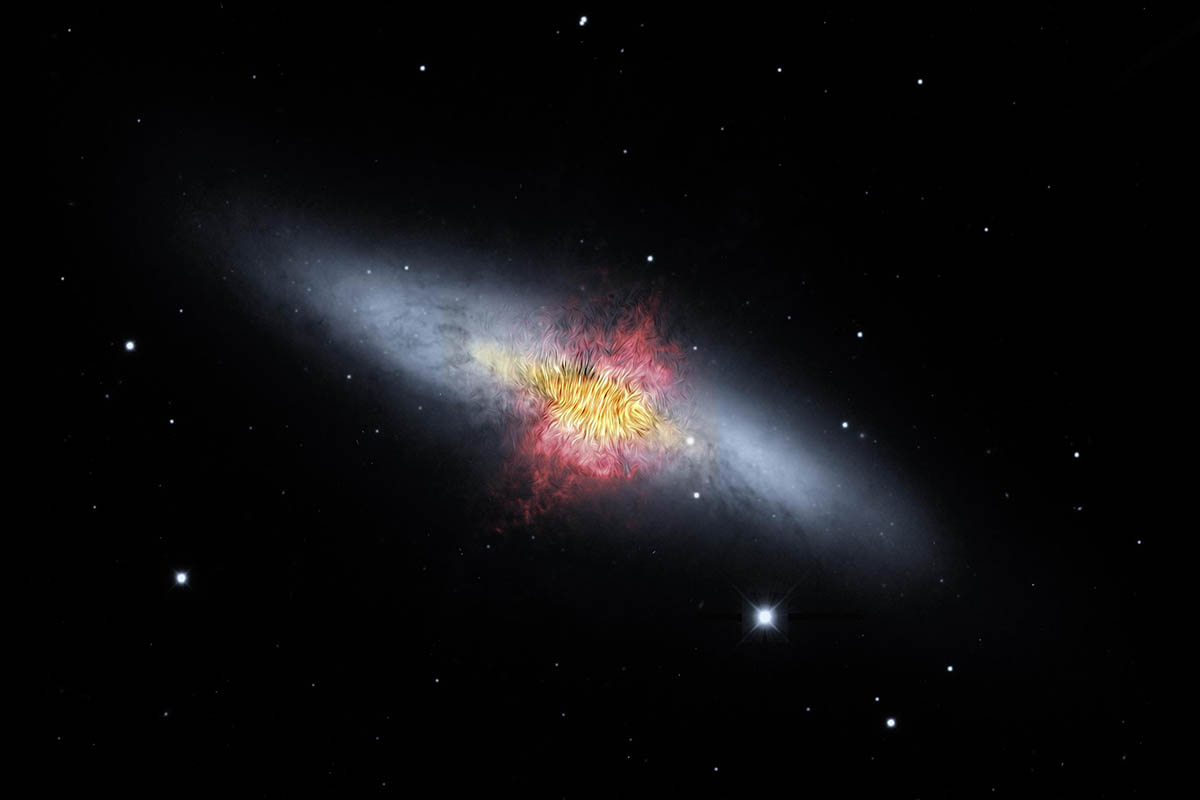The magnetic field lines of the the Cigar Galaxy (also called M82) appear in this composite image. The lines follow the bipolar outflows (red) generated by exceptionally high rates of star formation. (NASA/SOFIA/E. Lopez-Rodiguez; NASA/Spitzer/J. Moustakas et al)
Home The magnetic field lines of the the Cigar Galaxy (also called M82) appear in this composite image. The lines follow the bipolar outflows (red) generated by exceptionally high rates of star formation. (NASA/SOFIA/E. Lopez-Rodiguez; NASA/Spitzer/J. Moustakas et al) The magnetic field lines of the the Cigar Galaxy (also called M82) appear in this composite image. The lines follow the bipolar outflows (red) generated by exceptionally high rates of star formation. (NASA/SOFIA/E. Lopez-Rodiguez; NASA/Spitzer/J. Moustakas et al)


